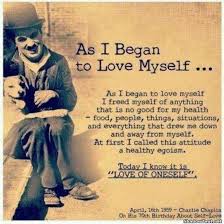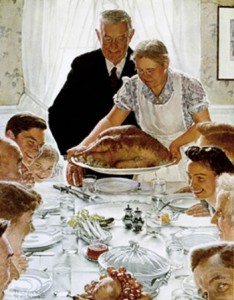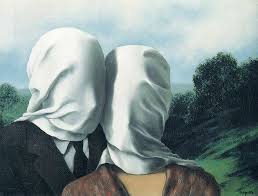
Tag Archives: love
Some believe love to be the most powerful force on the planet. Consequently, many believe love is the best solution to every situation. Fundamentally, that seems true, as long as love of self is kept high on the list of who or what to love. In other words, no, we can’t love others too much, but we can inadequately love ourselves.
The studies outlining the measurable, positive effects of love are extensive, from love shown to orphaned babies and love experienced in faith communities, to love creating bonds that literally carry information.
It is my firm belief that love will eventually prevail. And this notion is being studied scientifically by people like Gregg Braden. Mr. Braden’s work suggests the sign wave of love expands over time. To the contrary, it appears the sign wave of fear contracts with time. One could deduce, then, that love literally will prevail.
But since that extrapolation may not be realized for a while, we’re left wondering how best to love.
My great-niece, Maisey, is a star. Of all that I’ve posted on Facebook over the years, only three posts have broken the 150 mark for views. Two are pictures of Maisey. How come? 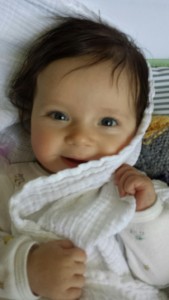
There’s no question, she is a beautiful and precious child. But something tells me it’s more than that. Take a good look at her most recent picture-the one with the blanket partly over her face. What do you see?
Here’s what I see. I see a child so full of love from those around her that it radiates from her. Does she get fussy? Sure, every child does. But there emanates from her something we cannot turn from. I believe it’s love.
We’re like moths to light that way. When we encounter pure love, we can not help but draw to it. Sometimes what we draw to in this way is physically beautiful: majestic mountains, a spectacular sculpture. Other times what draws us is emotionally beautiful, like a couple having a difficult but honest conversation. Perhaps it’s the rawness of this love that captures us. And not just the love between the two halves of this couple, but the love each person must have for self to be this clear and strong with another person.
Any sense can draw us into love: rapturous melody, breathtaking touch, even an earthy smell like horses.
Most people appreciate the love we feel near puppies. But sometimes we’re surprised when love shows up. Have you ever felt a sense of love when a healthy plate of food is put before you? Perhaps it’s the love we feel for and from the person that prepared it. Maybe it’s something emanating from the food itself. After all, some of the healthiest food we eat is still alive when we eat it.
Or what about the love we might feel when witnessing acts of heroism or faith. Even if we don’t share the same beliefs, sometimes we can feel love for someone who has given her or himself to a worthy cause.
But how could we feel lovingly toward someone who doesn’t believe as we do? Love is the answer. I think love, as described in the above ways (and so many millions of other ways) is discernable to us, no matter how disguised. What if love is more than a word or a feeling? What if love is some kind of signal or impulse? And what if each of us is born with the equipment necessary to detect that signal? And what if all the people in all the countries, with all the beliefs and disbeliefs, in spite of their best efforts, cannot turn this equipment off in self or others? What if this unifying signal or tone is the one absolute? And what if that tone is the key to healing the world?
Science is pretty clear on this one: love brings healing and wholeness. Fear, anger and doubt bring compromised immune function and unhappiness. So for your sake, why not add more love to your life in the New Year? 
We know from lots of studies that living in a state of peace and love and happiness strengthens our body’s ability to fight disease. The research is so consistent and prolific that most accept it now as common knowledge.
But we forget. We get politically fired up, or fired up on a basketball court, or fired up at a co-worker or neighbor. This is where the research can be a bit tricky to understand.
Research seems to suggest that getting “fired up” or angry isn’t a bad thing. However, if we blow a gasket on a daily basis, or if we hold our anger in and act like everything’s great all the time, then our bodies can pay the price. So it’s not anger itself that’s bad for us. It’s explosive or suppressed anger that will cause physical problems.
Same for sadness and fear. We all have regular occasion to be sad or scared or doubtful. These emotions are part of life. Problems arise, though, when we completely avoid these more difficult emotions, or when we get stuck feeling one for long periods.
Sure, there are times in all our lives when we seem to get angry a lot, or we just can’t shake the blues. But the healthier we get, the less fear, anger, doubt and sadness linger.
All emotions deserve a place at the table. Just make sure it’s you sitting at the head.
With practice, each of us is capable of naming individual emotions as they rise up. And mastery comes when we see each emotion simply as a wave that has splashed up from the ocean of our minds. We remain in peace as each feeling crashes the surface of our thoughts, knowing that soon it will return to the deep and quiet ocean it came from.
Our job is to watch these emotion waves rather than become them. When we become each individual wave or emotion, we can get tossed about. However, when we simply watch each wave, we stay calm like the ocean deep; like the deep waters of the still mind.
When we practice this emotional witnessing, we return more quickly to the peace and love always available to us and in us.
So to help add a little love to your New Year, consider trying one or two of these:
- Put your hand on your heart, and feel your own heart beat.
- Feel your lover’s heart beat.
- Make a donation.
- Get a massage.
- Give one.
- Send a card to someone who could really use it.
- Build something; bake something.
- Commit to doing something special next week that you really enjoy.
- Laugh hard.
- Sing.
- Let someone love you in a very specific way.
- Say, “I love you,” with conviction.
- Send loving thoughts to someone you don’t understand.
Here’s to more love, peace and joy in 2016.
When we are loved, just as we are, we learn to trust our own instincts. Once we trust our own instincts, we move forward in life with a sense of sureness or resolve.
Love is a powerful thing. It’s like light. Doesn’t that TV commercial say the human eye can detect the light of a single match in the dark, ten miles away? Dang.
Love seems to operate in the world like that. The unconditional regard from one person to another can bring light to years of darkness from abuse, rage or hurt.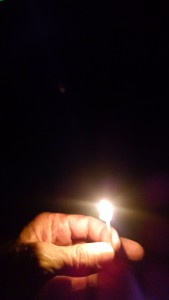
And when years of hurt and darkness in a person are illuminated by the light of love, that loved person goes forward with a new light that brightens the eyes of many that person sees over the course of a lifetime. And then all those people touched by that light which was once darkness bring more light into the eyes of all those they see. Love has this power in the world. Love has this power in the heart.
The resolve born in the heart of a person who feels truly loved changes the way life feels for that person.
First the person loved begins to feel strong enough to look deeply into the eyes of his or her own emotions: fear, anger, sadness, joy, hope.
Once those emotions are fully accepted in the self, those emotions provide better guidance. With better guidance, now from within, the self creates a life that feels better.
From this life that feels better, the self loved deeply by another begins to love deeply the self. When we love ourselves deeply, we become more clear about who we are and what we want.
As we become more clear about who we are and what we want, decisions come more easily. As our decisions, based on guidance from our own feelings, produce a better life, we walk moment to moment with a core, solid, palpable sense of resolve. This quality of resolve supports us feeling safe in the world, because we feel safe with ourselves.
Fear seems contagious, but so does love. Which will you catch?
Thanks to Oprah, gratitude journals were all the rage a while back. And while most wouldn’t peg me as a hipster, thanks-giving has real appeal. That’s because the simple act of gratitude can upshift our immune system. And the on going practice of giving thanks can actually change us at the level of our DNA–maybe more.
Cell biologist, Dr. Bruce Lipton, has a great DVD presentation called, “The Biology of Perception.” In it, he outlines some fascinating fundamentals about how we function at the cellular level, and how that translates to the way we are in the world at large.
In his presentation, Dr. Lipton wonderfully explains the notion that our bodies are always operating in one of two basic modes: growth or protection. Always [and only] one mode or the other. Never both. This paradigm overlays perfectly with the work of Gary Zukav who says we constantly move between two inner states: love or fear. Dr. Lipton describes love to be the number one ingredient for supporting growth in humans. Gratitude is love: love for someone, love for something, love for someplace, love for some belief. All gratitude.
This is where it gets interesting. Our body’s general mode of living or being in the world begins at the level of perception. For example, I love racing motorcycles. Therefore, no matter how many others perceive racing as dangerous, when I race my systems kick into the growth mode since I perceive racing as awesome. When we are in growth mode, our immune systems are bolstered. That’s because when we are in a state of love or gratitude, healthy blood flow is maintained to the gut where the immune system is born. That’s unlike the mode of protection or fear, by which blood is forced out of the gut, to the arms and legs. For me, racing motorcycles establishes a state of love, born of gratitude, which produces growth or health in my body. That’s assuming, of course, I “keep the rubber side down.”
But that’s the thing. What do you think happens to the immune system of someone who cares about me, but perceives racing as dangerous, when she watches me on the track? That person’s body will go into protect mode. In protect mode, the body squeezes blood out of the gut and core organs, and sends that blood to the limbs, readying for fight or flight. Because this fear state robs the belly of blood, the immune system living in the gut of that person watching me race takes a hit. At that point, that spectator is far from a mode of gratitude. And this interrupts growth. All of this gets reflected in the hormonal and nervous systems. And all this has the potential, according to Dr. Lipton and others, to literally redo DNA. (Remember The INNERnet?)
We have the same external event, a motorcycle race, producing a growth response in one person and a protection response in the other. What creates the difference in responses? Not the race. It’s each person’s perception of the race. Think of the implications of perception, beyond a race. How often do we protect simply because of a perception? And what might happen if we had a growth response instead?
Here’s the last and maybe most interesting of Dr. Lipton’s points. This basic love/growth versus fear/protection process begins at the cellular level. He tells us that if you lay a single human cell in a petri dish, and put some form of nutrient near that cell, the cell moves toward the nutrient and grows. But if you put that same human cell in a petri dish and place a toxin near it, the cell moves away to protect itself.
Now multiply that basic process by trillions, the number of cells in each human being. Then multiply that by billions, the number of us on the planet. Dang, that’s a lot of cells and humans either growing or protecting. Nonstop, all of us are either growing or protecting!
So, gratitude and love expand us. Fear and protection contract us. What would happen if all the cells of all the people in the world expanded in gratitude at the same instant? It all starts with perception. Do we look out at the world and see good, or something else?
With that, the prescription for the health of our species comes into focus. When we all find reason for gratitude, the human race grows in love.
Happy thanks-giving.
The tragedies of Paris, Beirut and Russia threw those countries into deep sorrow, and at the same time, opened wounds of grief in hearts around the world. When someone we love is hurting from grief, we want desperately to take that pain away. Consequently we say things we hope will help. But words often miss the mark. When someone is grieving, just being there is more important than anything we can say.
“It’ll get better,” “God has a plan,” “I understand”: these words are meant to make the person we love feel better. Having worked with the chronically and terminally ill for more than 25 years, I can tell you, more often than not and despite our best intentions, words like those don’t help.
In fact, words like, “Be strong,” or, “It could be worse,” or, “It’ll all make sense one day,” often shut down someone expressing strong emotion. And when we’re in a world of hurt, literally and figuratively, most of us just want someone to share our pain, not shut it down.
Instead of words, let your presence speak for you.
No words can take away the deepest pain of loss. Mostly words just get in the way. But when we simply show up for someone that’s grieving, our presence says more than any words could. Our presence lightens the weight of isolation someone grieving might feel. Being there also says, “I can handle your pain, no matter what.” This makes a difference.
When we’re madly in love, it’s all good. Or so it seems. When we’re madly in fear, what felt like love now just feels like madness. Here are some thoughts about distinguishing the madly in love from the madly in fear.
We all have two needs: the need to be connected and the need to be separate. Behind each of these two needs is a fear. Behind the need to be connected is the fear of being over-connected or engulfed. Behind the need to be separate is the fear of being over-separated or abandoned.
When you are healthy, your relationships reflect that health. And healthy means you balance your need to connect and your need to be separate. So does your lover. Your choice of lovers mirrors all that’s wonderful about you and all that’s wounded. In keeping with this mirroring, healthy lovers mutually recognize and honor both needs for connection and for separateness. That same mirror also reflects any fears.
“Madly in love” usually becomes, “in love,” which may for some evolve into simple, healthy “love.” Healthy love has its ups and downs, but doesn’t reach the extreme swings in thoughts, feelings and actions that we’ll talk about later. In healthy love, there are real differences. And sometimes that means intense conversation. But respect for the other remains in tact and trust remains unbroken.
Healthy love feels comfortable even if the object of your affection is out having a good time without you. Healthy lovers may actually enjoy time being separate from the other. And there’s no preoccupation wondering what your lover thinks if you take time for yourself. That’s because you trust that person to take care of him or her self. And that person trusts you and what you do with your time.
So those are thoughts about healthy love and the need for separateness. The other half of the equation is how you respond to your need for connection. In healthy love, you feel safe moving toward the object of your affection, because you know, first of all, that your lover is happy to receive your connection. Secondly, you know that if one of you needs space when the other needs contact, you (as an act of love) will either accept the other’s need for connection, or will honestly express the need to be more separate. All of this is done in a spirit of respect. It’s actually pretty straight forward. No heaviness. No deep talks. And respect is a product of trust, which emerges as a central quality in healthy love. However, in unhealthy love, trust is lost in fear.
Unhealthy lovers feel just the opposite when separate from their love interest: “What’s my love doing?”; “Who’s my love with?”; “Is my love thinking about me?”; “Does my love have as much fun with me as he/she does with that other person?” These are unhealthy thoughts related to madly in fear of abandonment and these are the hallmarks: suspicion, neediness, things are never quite enough, trying too hard, over-giving, and holding on with clinched fists.
The other primitive anxiety spoken about above is madly in fear of engulfment: “I can’t breathe in this relationship anymore.”; “There’s always an issue.”; “I’m not attracted to you.”; “Grow up.” Rage, disrespect, disengagement, giving up, pushing away: these are attempts to create distance from the pursuing partner, and hallmarks of the madly in fear of engulfment.
Soon the madly in fear dance begins: one person backs away, the other pursues. The one pursuing feels hurt and the one pursued feels cornered. The passion and play and pleasure and flow of the original relationship have turned into one sand trap after another. Everything seems bogged down and weighty and flat-out scary. Of course, it takes two to tango, and eventually the one pursuing stops, leaving the pursued feeling alone, and the step flips. Dang.
If you think fondly of your love, and even long for that person, but feel comfortable by yourself and, yes, comfortable in the presence of your lover, you’re probably healthy in love. If you feel uncomfortable and anxious away from your lover; uncomfortable, judgmental or highly self-conscious around your lover, you’re probably crazy in fear.
The way out: pay attention to your own fear, not your lover’s stuff. Own that your lover is not causing your fear. It’s yours to shift. If you both take responsibility for your own fear, you might just create love.
New York Times bestseller, Gary Zukav, introduced me to the love/fear paradigm years ago through his book, The Seat Of The Soul. It’s become clear to me, after 35 years counseling folks in all kinds of pain, that , more often than not, we are walking in either a state of love or a state of fear. Thank goodness, shift happens.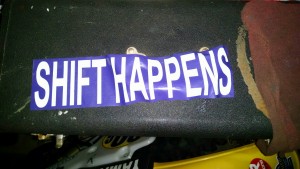
Trust, peace, tenderness, openness, gratitude, kindness, and healthy power: these are all emotions born of an inner experience of love.
Doubt, anxiety, anger, confusion, discontent, bitterness, rigidity, impatience and unhealthy power: these are all emotions born of an inner experience of fear.
Love and fear, like all emotions, are just that–emotions. Period. One emotion is no better than the others. All are just sign posts on the journey of our lives.
But here’s the important difference between those emotions in the love category and those emotions in the fear category. Those emotions born of an Innernet of love make us feel good. Those emotions born of an Innernet of fear make us feel bad.
By the way, I refer to these two states as Innernets because these core emotions have a measurable effect on a core aspect of our brains, the neuronets.
So while no emotion is bad, all emotions have a good or bad impact on how we feel, which affects our hormones, neuropeptides and neuronets. And this has a good or bad impact on our bodies.
Fundamentally, what helps us and our bodies most is to experience whatever emotion shows up and then gradually shift ourselves to an Innernet state that feels good or better.
This shift is not about thinking. To access an Innernet state that feels better, you have to deal with feeling.
So here’s a quick, three-step technique to make Shift Happen:
- Ask yourself regularly, “What’s my core feeling: love or fear?”
- Ask yourself, “Does this core feeling serve me right now?” Sometimes we are given guidance by our anger, sadness or fear. As a result, sometimes it’s important that we experience those emotions.
- If your core emotion right now does not serve you, gently shift what you experience at a core level, in your gut, to a feeling more like love.
In making Shift Happen for yourself, it’s important that you gauge the shift with your gut and not your mind. Your body can help here. Your body has ways of telling you that you are moving into an Innernet state of love: breathing slows, face relaxes, stomach quiets, and body movements become more fluid, just to name a few.
If you’re having trouble creating a shift in yourself to loving kindness, it’s OK. Be gentle with yourself. Don’t force or wrestle yourself into a state that feels better. Simply set an intention regularly to feel more of this inner goodness, and then invite that better feeling when you can. Again, the real shift happens at the emotional and physical level. To truly make a shift in this way requires fundamental shifts in body chemistry and form. This can take time. Please be patient with yourself.
If it helps, try going for the feeling you have when you’re in the arms of someone you love. Again, the feeling matters more than the thought. Or go for the feeling you have when holding a baby, or a puppy. Thoughts can take you there, but the destination we’re after is the feeling. Let your whole self and body bask in this feeling. Then Shift Happens.
In the hit movie, Trainwreck, Amy Schumer’s character, also named Amy, shows us in the first half of the show how our childhood wounds can express themselves in our adult lives. Given the monogamy-is-unrealistic motto firmly planted in Amy’s young mind by her dad, she lives out that approach in adulthood, hooking up with lots of men and drinking to quiet any pain.
Death of a loved one is hardship. In the hit movie, Trainwreck, Amy Schumer’s character, also named Amy, struggles to connect deeply with others, grieves her father’s death, and begins a healing journey. Let’s take a look at all three aspects of the film, and life.
Endorsed by two New York Times bestselling authors.”
